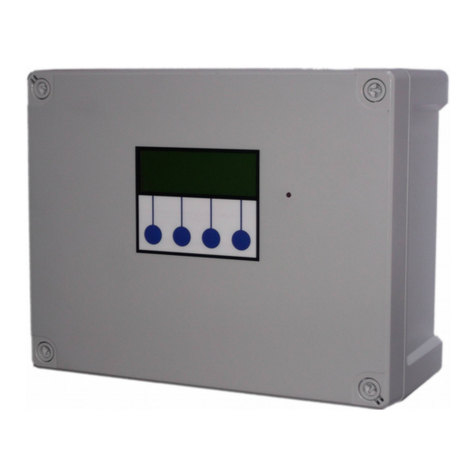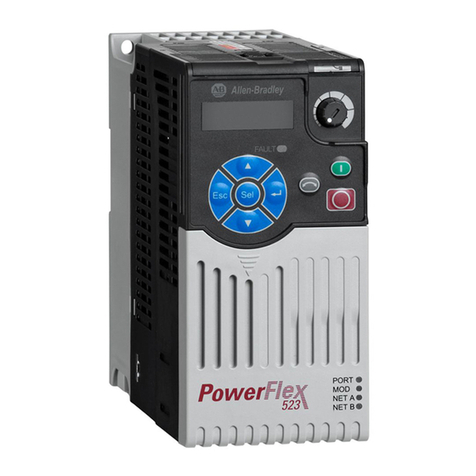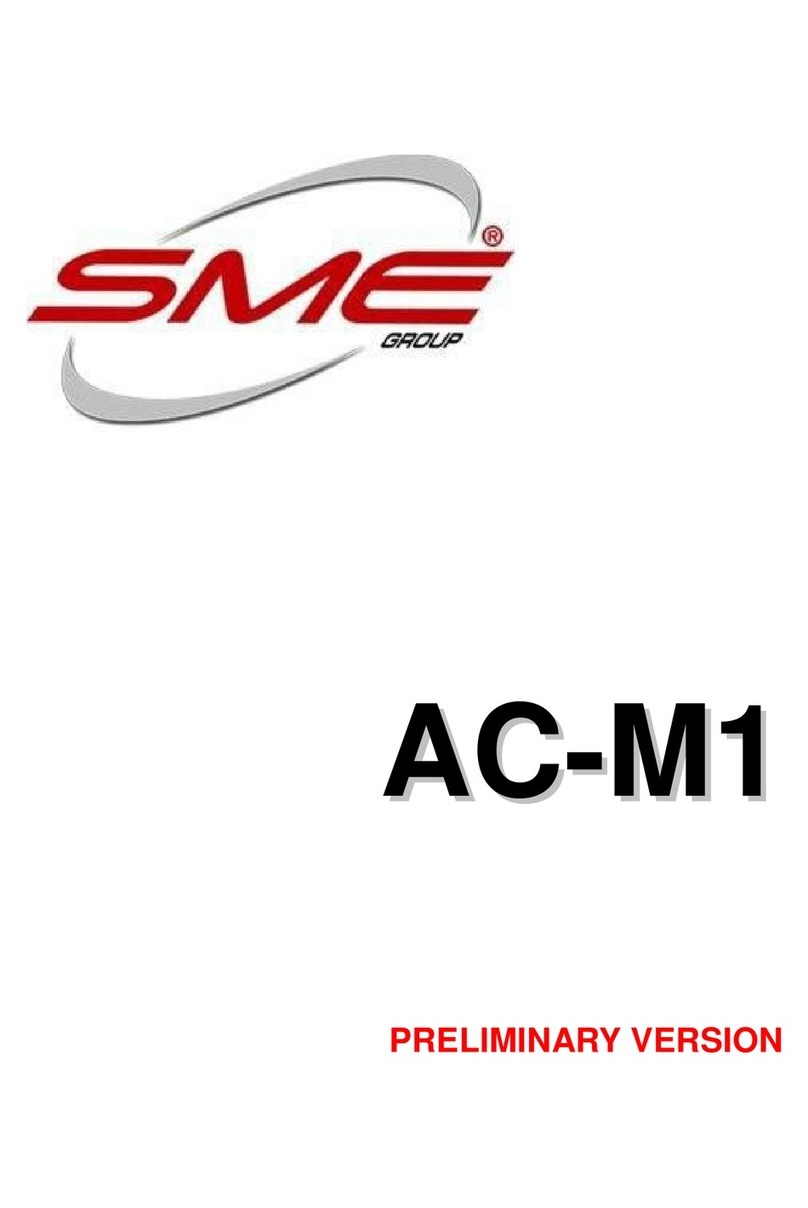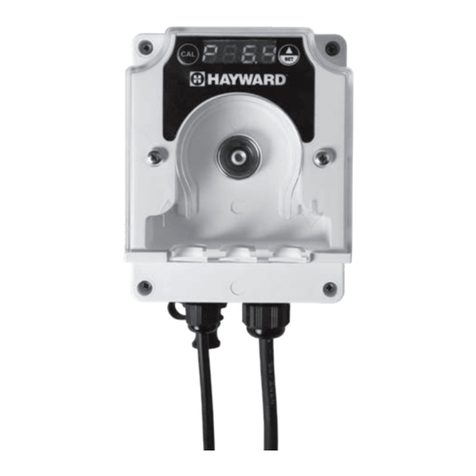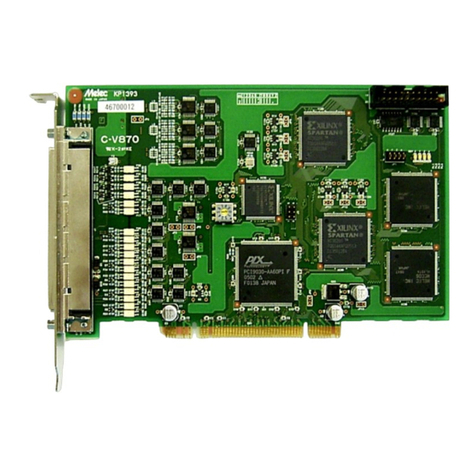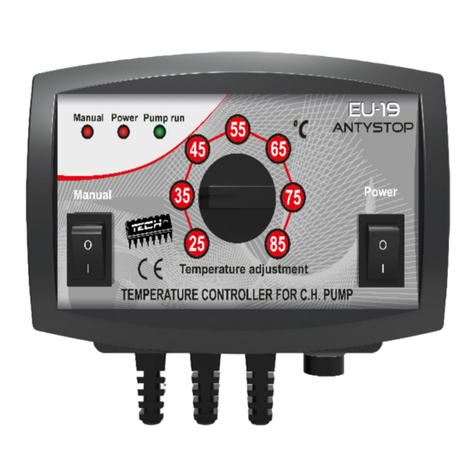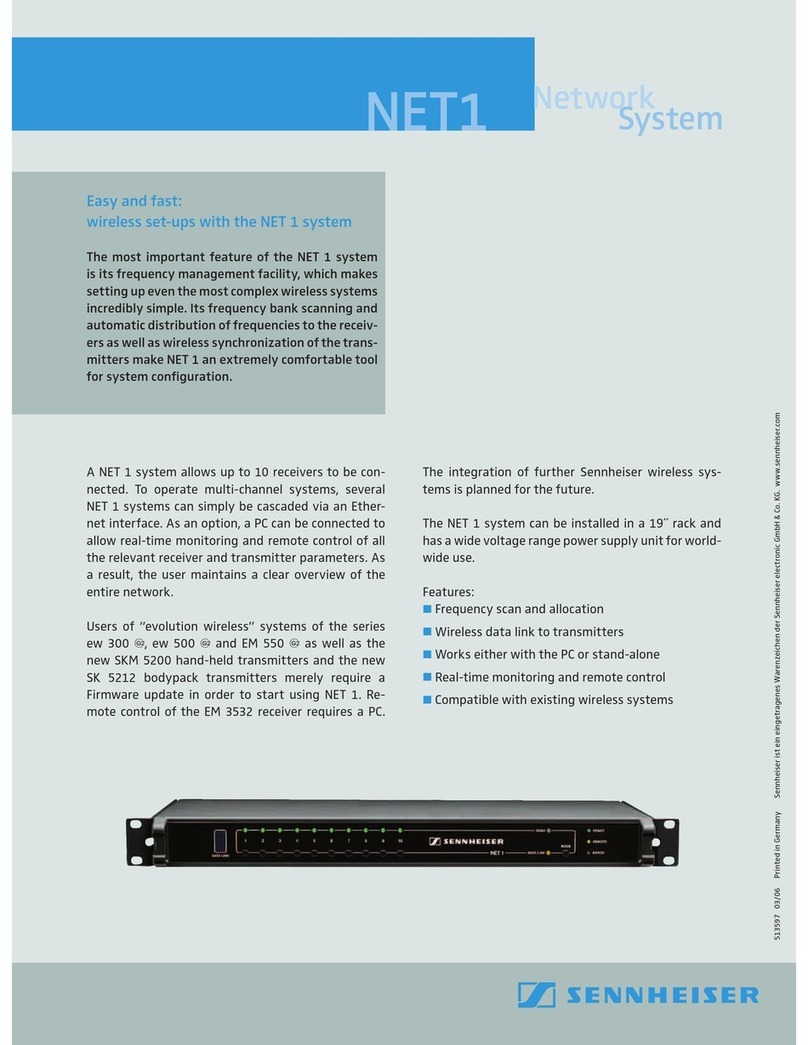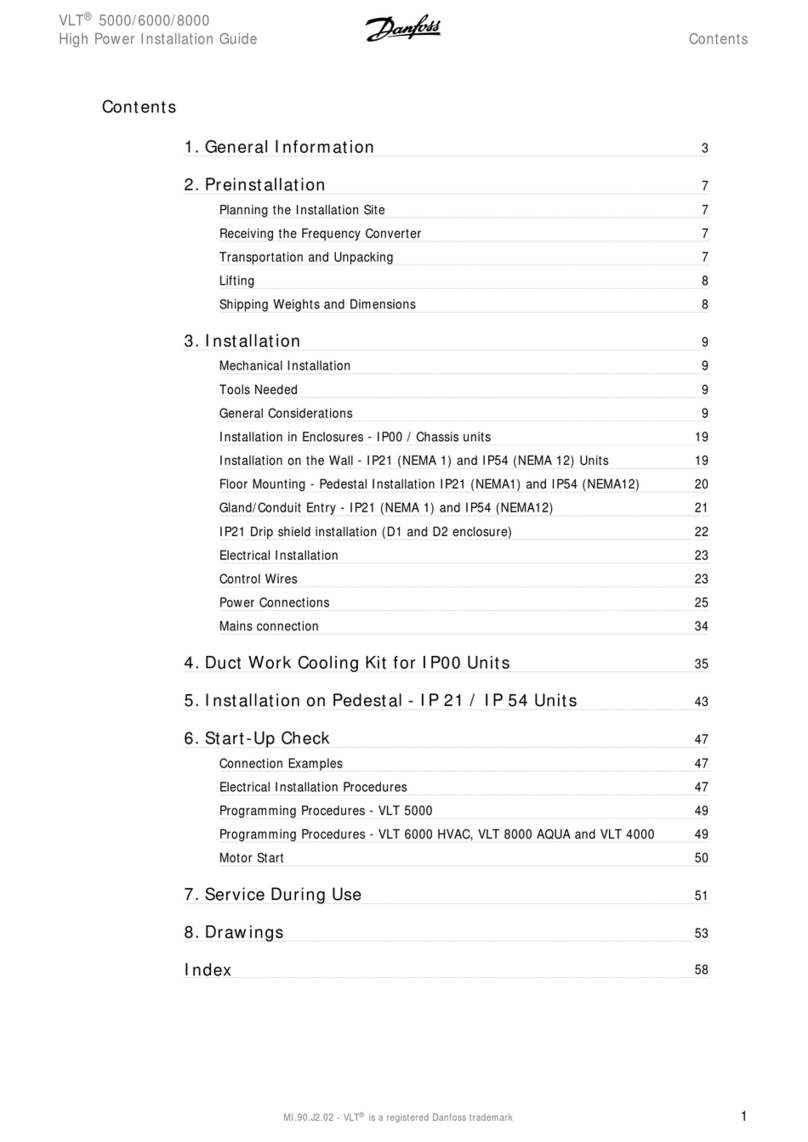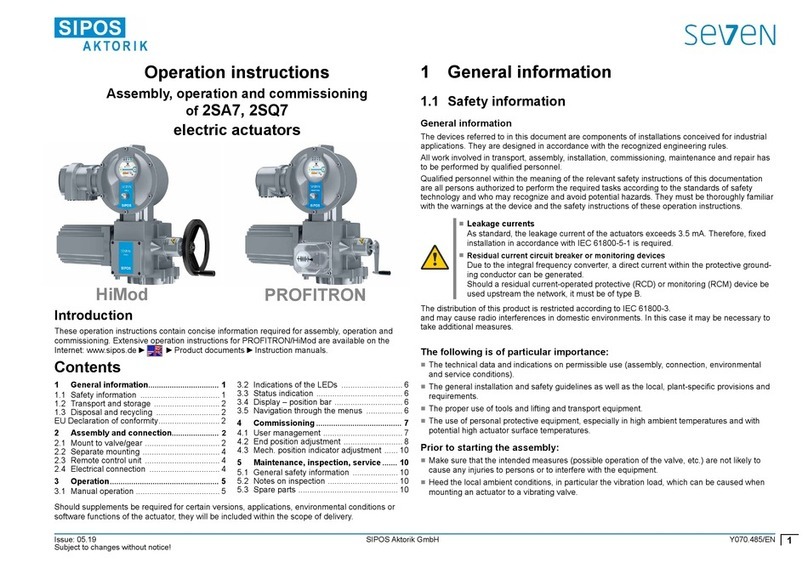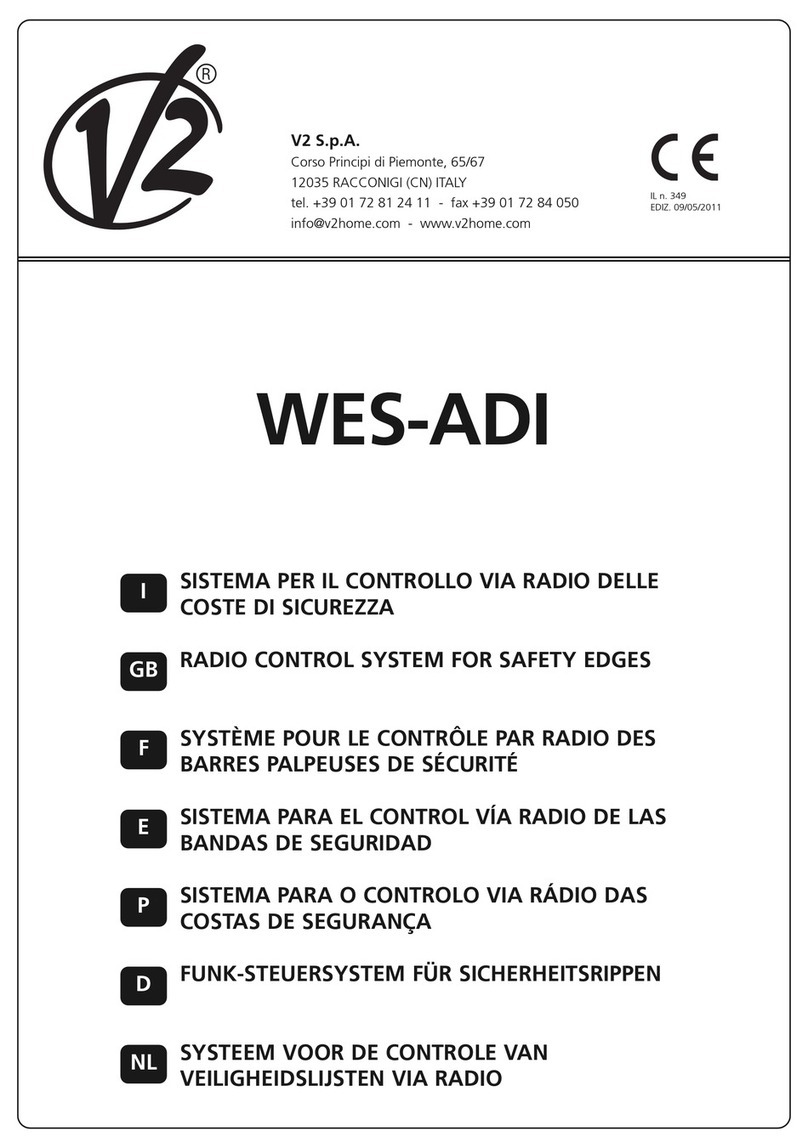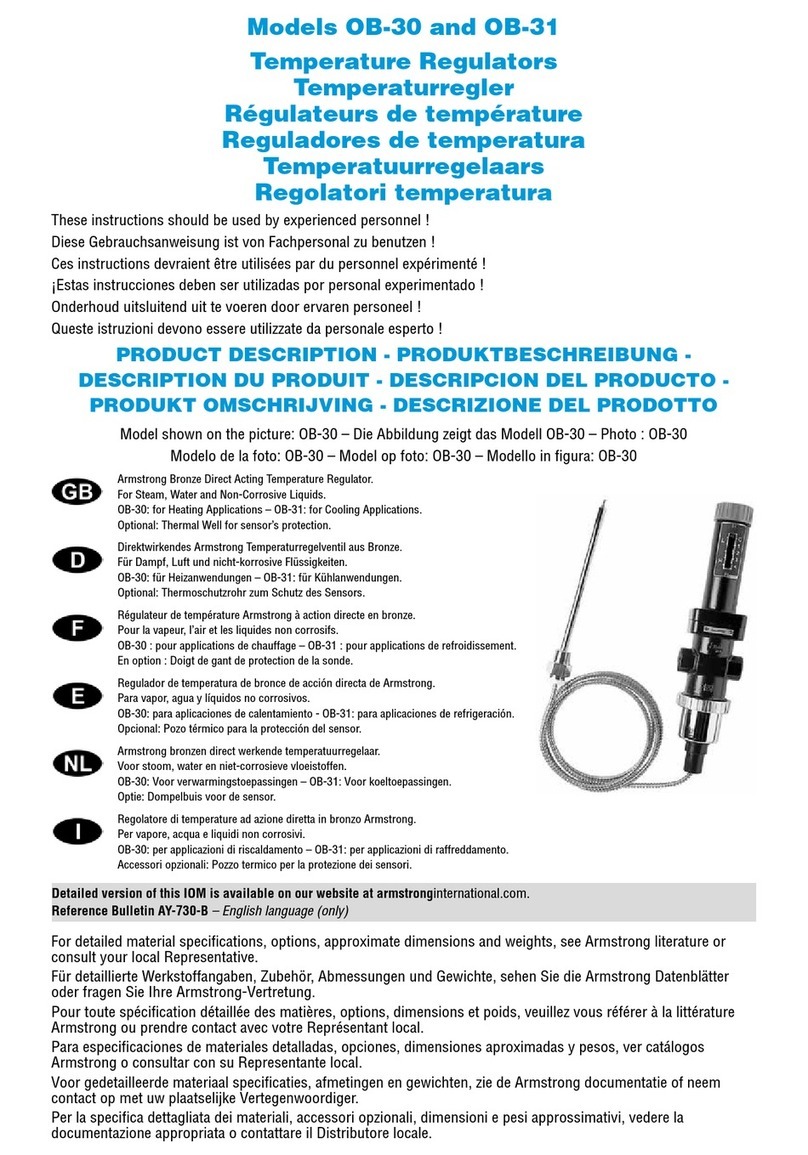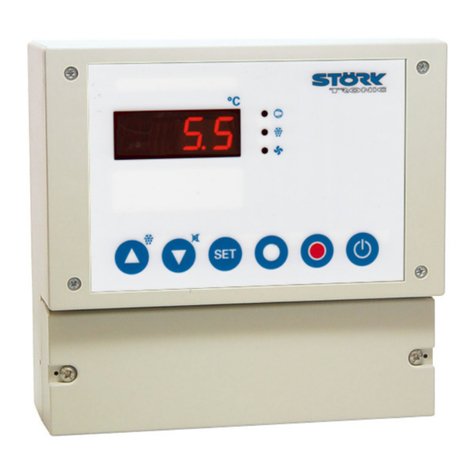Sigtronics SPCC-3 User manual

igtronics
®
SSpecialists in “SOUND” Management
178 East Arrow Highway, San Dimas, CA 91773 ( 909 ) 305-9399
INTRODUCTION
The Sigtronics Portable Communications Controller
(SPCC) provides a pilot / observer “mission team”
with the ability to transmit and receive on multiple
transceivers simultaneously and talk to each other
via a voice activated (VOX) intercom. All these fea-
tures, plus its portability, make it ideal for the air-
borne or the ground mission team!
Typical Radio Congurations: Use with your air-
craft radios (permanently installed or hand-held
models) and two additional “FM” transceivers. A
typical “FM” radio transceiver would be: business
band, police, ham, CB, ight phone, hand-held air-
craft, marine, etc. (Some of these are actually AM
radios, however they can be used).
Dual Audio Panel (SPCC-3) capability allows each
headset position to select which radios to transmit
and receive on — independent of the other headset.
Each headset position has dual volume controls, one
for radio reception, and the other for their intercom
volume level.
Voice Activated Intercom feature allows “hands-
free” communication between headsets connected
to the SPCC. Start speaking and the intercom in-
stantly turns on to relay your message clearly to the
other headset. Stop talking and it turns o to reduce
background noise.
Portable design gives exibility and eliminates ex-
pensive installation costs. Especially useful to small
departments that rent or lease. Or if a scheduled
aircraft is down, the SPCC can be used in an alter-
nate aircraft.
Sigtronics SPCC-3 Communication Controllers
OPERATING INSTRUCTIONS
Models SPCC-3, SPCC-3+2, and SPCC-3+2T

TECHNICAL HIGHLIGHTS which make the SPCC un-
beatable are:
Fail-Safe Bypass Switch allows the pilot to operate
the aircraft radios even if the unit is turned o.
Automatic Sidetone Generation lets the pilot and
observer hear what the other is transmitting over
the radios.
Separate Transmitter Microphone Gain Adjust-
ments adjust the aircraft radio and the two FM ra-
dios independently.
Excellent RF Immunity guarantees clean, clear
transmissions.
Power Requirements: A standard cigarette lighter
socket (11 to 34 VDC) or a battery pack.
Standardized to general aviation headsets and
portable push-to-talk switches. (The unit can also
be wired into permanently installed PTT switches).
Helicopter headsets will also work with the unit if
headset plug adapters are used.
APPLICATIONS
• Airborne Law Enforcement - Small police depart-
ments to large organizations like the FBI.
• Civil Air Patrol / Coast Guard - Air search and rescue
operations.
• Medevac Helicopters - Medical emergency aircraft
• Airborne Fire Control
• Forestry Departments
• Wild Life Organizations - Survey and tracking op-
erations
• TV News Crews
• Airborne Trac Reporters
• Ground Operations requiring more than one radio.
• Additional aircraft VHF radio capability - Add one
or two inexpensive hand-held aircraft radios without
installation costs.
CONTROL FUNCTIONS
ON / BYPASS - Power Switch - In “ON” position; sup-
plies power to all SPCC circuits. In “BYPASS” position;
disables all unit functions, and connects pilot directly
to the aircraft radios. A fail-safe feature!
VOL - Intercom Volume - Adjusts intercom volume
level.
SQ - Intercom Squelch - Adjusts VOX operation of the
intercom for variations in headset microphones and
background noise levels.
XMIT SELECT - Transmit Select - Used to select which
radio to transmit on.
OFF/A/C, OFF/FM-1, OFF/FM-2 - Receive Select - Used
to select which radio is heard in any combination. Note:
The radio selected by the XMIT SELECT switch is always
heard regardless of the positions of the receive select
switches.
REC VOL - Receive Volume - A general control used to
set the volume level of the aircraft radio(s), and both
FM radios.
A/C RADIO MIC GAIN ADJ - Aircraft Radio Microphone
Gain Adjustment - Sets the transmit mic audio level for
the aircraft radio(s).
FM-1 RADIO MIC GAIN ADJ - FM-1 Radio Microphone
Gain Adjustment - Sets the transmit mic audio level for
the FM-1 radio.
FM-2 RADIO MIC GAIN ADJ - FM-2 Radio Microphone
Gain Adjustment - Sets the transmit mic audio level for
the FM-2 radio.
SPCC INSTALLATION
The SPCC requires seven simple connections to put it
into operation. The power cord, the aircraft radio, the
FM-1 radio, the FM-2 radio, the push-to-talk switches,
and the headsets must all be connected for the system
to work as designed. But do not fear, Sigtronics has
simplied the connection process, so it will just take a
few moments. Refer to the SPCC connection drawing
Figure 1 on page 3.
1. Power Cord: The four foot power cord with LED
Power Indicator is designed to plug directly into
a standard cigarette lighter socket. The LED indi-
cator will be on if power is available, it will be o
if no power or reversed socket wiring. Note: The
LED shows power available, not SPCC On or O.
The SPCC will run on 11-34 VDC, so it automatically
Page 2 SigtronicS SPcc-3 oPerating inStructionS www.SigtronicS.com

OFF OFF
FM-1
XMIT SELECT XMIT SELECT
SPCC-3
FM-2A/C
OFF OFF OFF
FM-1 FM-2A/C
OFF
SQ
REC VOL
INTERCOM INTERCOM
REC VOL
ON
BYPASSVOL SQ VOL
MIC
XMIT SW
HDPH
MIC
XMIT SW
HDPH
adjusts to 12 or 24 volt aircraft. The SPCC can also
be powered by an auxiliary battery pack, if desired.
2. Aircraft Radio: The mic and headphone cords on
the unit are designed to plug into the mic and head-
phone jacks in the panel of the aircraft. If the aircraft
does not have either one of these jacks, they can be
installed by any qualied avionics technician. If you
plan to use the SPCC in a helicopter, please contact
Sigtronics for advise on adapting the general avia-
tion plugs to the helicopter jacks.
3. FM-1 Radio: An interface cable for the FM-1 radio
is needed to connect it to the SPCC. On one end of
the cable will be a ve pin connector to plug into the
jack on the top of the SPCC. On the other end will be
whatever is required by your FM radio. Since virtually
any radio can be used and there is little standardiza-
tion among manufacturers, no one cable will work
for all radio transceivers. Therefore, the FM-1 radio
interface cable will have to be fabricated for your
particular radio. This cable can be supplied to you
by Sigtronics or made up by your radio technician. If
you decide to purchase completed interface cables,
Sigtronics has an extensive cable making facility and
can provide you with them at minimum cost. We will
need to know what length cable you require and the
manufacturer and model number of the radios you
wish to use.
If you would rather have your radio technician make
the cables, the FM radio interface cable connector
pin assignments and some typical cable wiring ex-
amples are located on page 7. Two ve pin connector
plugs are supplied with each SPCC unit for this pur-
pose. You will also need the radio mating connectors
and connection schematics or hook-up drawings
for your particular FM radios. These can usually be
obtained from the radio manufacturer.
4. FM-2 Radio: Same as step 3.
5. Push-to-Talk Switches: In order for pilot and ob-
server to transmit on their selected radios, they will
each need a push-to-talk (PTT) switch. The SPCC is
compatible with all standard general aviation type
portable push-to-talk switches. The male plug on
the PTT switches plug directly into the XMIT SW jacks
of the SPCC unit. If your PTT switches also have a
female jack, it is not used. The pilot should strap the
switch end of his portable PTT switch to the yoke or
stick of the aircraft. The observer’s PTT can similarly
be strapped to the co-pilot controls or operated as
FM 1
Radio
FM 2
Radio
Aircraft
Headphone
Jack Aircraft
Hand Mic
Jack
Cigarette Lighter or
Portable Battery Pack
* Portable
Transmit Switch
Mic Plug
Transmit Plug
Headphone Plug
Mic Plug
Transmit Plug
Headphone Plug
FIGURE 1
* The female jack on portable
push-to-talk switch is not used.
FM-1 Radio
Interface Cable
FM-2 Radio
Interface Cable
FM-2 Radio
Interface Jack
FM-1 Radio Mic Adjust
FM-2 Radio Mic Adjust
* Portable
Transmit Switch
A/C Radio Mic Adjust
FM-1 Radio
Interface Jack
LED Power
Indicator
www.SigtronicS.com SigtronicS SPcc-3 oPerating inStructionS Page 3

a hand-held switch. Various types of push-to-talk
switches are available from Sigtronics, including one
that does not have the female jack.
If you already have permanently wired push-to-talk
switches in the aircraft, and wish to use them with
the SPCC instead of the portable type, then wiring
modications will have to be made to the aircraft.
Again, your avionics technician should be able to do
this for you.
6. Headset Hookup: All standard general aviation
headsets are compatible with the SPCC unit. Heli-
copter type headsets can also be used if adapter
cables are used. (Sigtronics manufactures cables that
adapt the helicopter plugs to general aviation plugs).
Plug the microphone and headphone plugs on the
headsets into the jacks labeled MIC and HDPH, on
the front panel of the SPCC. Put on the headset, and
position the boom mic close to the mouth, as is the
practice with hand-held microphones. Voice clarity is
best when the mic is about 1/4” away and slightly o
center from the lips. Turn headset volume control(s),
if any, all the way up.
INITIAL SYSTEM CHECK-OUT
The following System Check-Out will provide you with
a “personalized” system. Perform the next few steps
while on the ground to assure that all functions on the
unit and radios are set to your personal hearing and
speaking comfort.
CAUTION - As is standard practice with all aircraft equip-
ment, be sure that the radio(s) and the SPCC are turned
OFF when you start up the aircraft engine.
1. To assure that the aircraft radios, and pilot’s head-
set and PTT switch are connected and functioning
properly, put ON/BYPASS switch into “BYPASS” po-
sition. Then turn on the aircraft radios, and verify
that the pilot can hear the radios and can trans-
mit using his push-to-talk switch and headset. All
other intercom functions should be inoperable in
the BYPASS mode.
2. Intercom operation and adjustment can be per-
formed by the following procedure:
A.First set the ON/BYPASS switch to the “ON” posi-
tion and turn both REC VOL controls all the way
down (counterclockwise).
B. Turn both intercom volume controls to the 9
o’clock position and both squelch controls all
the way up (clockwise). Notice the intercom is
now continually activated and you should be
able to talk between headsets.
C. To adjust the intercom squelch controls for voice
activated operation (VOX), it is helpful to have
some background noise present. It may also be
necessary to turn up the intercom volume con-
trols. Turn both intercom squelch controls all the
way counterclockwise. Now, without speaking,
rotate one of the squelch controls clockwise
until you hear the background noise in your
headset. Next, using that same control, rotate
counterclockwise small, incremental amounts
until the background noise disappears. (This
procedure is necessary because the squelch is a
“fast on, slow o” system). That squelch control
is now set.
D.Adjust the other intercom squelch control
similarly by turning it clockwise until you hear
background noise. Rotate counterclockwise in-
cremental amounts until the background noise
disappears.
Small adjustments may be necessary if aircraft
background noise changes signicantly - such
as from idle to full power.
3.Radio Selection of both the aircraft and the FM
radios is provided by two switches.
A.XMIT SELECT determines the primary radio you
wish to transmit and receive on.
B. OFF/A/C, OFF/FM-1, OFF/FM-2 selects which ad-
ditional radio or radios you wish to receive in
your headset.
4.Receive Volume Controls (REC VOL) are general
volume controls, meant to provide overall listen-
ing level for all three radios simultaneously - A/C,
FM-1, and FM-2. Finite volume adjustments of any
individual radio should be done by altering the
radio volume control at the radio itself.
Page 4 SigtronicS SPcc-3 oPerating inStructionS www.SigtronicS.com

SYSTEM OPERATION
Once the radios are selected, pilot or observer can
transmit at any time simply by pressing their PTT
switch. When one position transmits, several things
take place automatically to the transmitting side of
the SPCC:
• The intercom between the two positions is turned
o.
• The receive audio of the radios not selected by the
XMIT SELECT switch are muted, regardless of the
position of the receive select switches.
• The selected radio is put into transmit mode.
• The headset microphone audio (your voice) is sent
to the selected transmitter.
• Sidetone is generated and sent to your headphones.*
* Sidetone is a portion of the transmitted voice signal
sent back into your headset, so that you can hear what
you are saying while transmitting. The RECeive VOL-
ume control adjusts the volume level of the sidetone
that you hear in your headset.
The non-transmitting side is not aected (except for
intercom) when the other side transmits. The non-
transmitting side can monitor the transmissions of
the other side by simply selecting the same radio on
his side of the SPCC. Of course, when the PTT switch
is released, (stop transmitting) all functions return to
normal, instantly and automatically.
Simultaneous Transmit is the most attractive and
powerful feature of the SPCC. Both pilot and ob-
server can transmit at the same time - either on
separate radios or on the same radio transmitter!
When on dierent radios, the pilot and observer
will not interfere with each other’s communications.
For example, the pilot can talk to air trac control
while the observer talks on one of the FM radios to
the ground crew, or vice versa. On the other hand,
they can also transmit on the same radio transmitter.
If, for example, the observer is talking on one of the
radios, the pilot can jump right in and add to the con-
versation simply by pressing his PTT switch. Both voices
will be heard by the receiving station.
TRANSMIT MICROPHONE GAIN ADJUSTMENTS
Transmit microphone gain adjustments for both FM
and the aircraft radios are provided through three small
holes on the top of the SPCC unit. These adjustments
set the microphone audio level going to the radios dur-
ing transmit. Adjustment should be made only if the
outgoing radio transmissions are reported as weak or
garbled. The Aircraft Radio Mic Gain Adjustment is set
at the factory for standard aircraft radios and should
not need any adjustment. The two FM Radio Mic Gain
Adjustments, however, will more than likely need to be
initially set to your particular FM radios. These levels,
once set, should never need adjustment again unless,
of course, the type of FM radios used are changed.
The following simple procedures take you through
the adjustment of the FM and A/C mic gain levels. If
desired, a qualied radio technician can do this for you.
FM-1 & FM-2 Radio Mic Gain Adjustment can be made
through the middle and right hole respectively, just to
the right of the FM-1 radio interface connector with a
small, at bladed screwdriver. The basic adjustment
concept for both FM radios is simple. On a one at a
time basis, you will be setting the level and clarity of
outgoing transmissions of the FM radios, when they
are hooked up through the SPCC, to match or exceed
that of transmissions on the radios when they are not
connected to the SPCC. To do this, you will need to
transmit and receive on the FM radios to a remote
station. Arrange to have someone nearby with radios
compatible to the FM radios you are using with the
SPCC. Then rst for FM-1…
1. Set the ON/BYPASS switch to the “BYPASS” position
and connect the SPCC up to power, as normal. Plug
in the observer’s PTT switch and headset. (It is not
necessary to connect the A/C radios or the pilot’s
headset or PTT switch for this adjustment.) Do not
connect the FM-1 radio to the SPCC at this time. Set
the observer’s XMIT SELECT switch to “FM-1”, and
all three receive select switches to “OFF”.
2. Set the SPCC aside for a moment. With the FM-1 ra-
dio disconnected from the SPCC, transmit as normal,
on the FM-1 radio, to the remote station. Transmit
long enough so that the receiving station can get
“calibrated” to your transmission (voice) level.
3. Connect the FM-1 radio to the SPCC as normal with
the FM-1 interface cable. Put on the observer’s head-
set and turn the SPCC “ON”. Verify FM-1 radio recep-
tion. If OK, use observer’s PTT to transmit to your
receiving party. If receiving station reports weak
transmission, use the screwdriver to turn the FM-1
www.SigtronicS.com SigtronicS SPcc-3 oPerating inStructionS Page 5

MIKE GAIN ADJ clockwise a small amount. If they re-
port garbled or broken transmissions, turn the FM-1
MIKE GAIN ADJ counterclockwise a small amount.
Repeat as necessary until the receiving party reports
that transmissions through the SPCC sound as good
or better then when the FM-1 radio is used separate
from the SPCC. That’s all that’s required for FM-1.
4. To set the FM-2 Radio Mic Gain Adjustment rst set
the observer’s XMIT SELECT switch to “FM-2”.
5. Take o the headset and set the SPCC aside for a
moment. With the FM-2 radio disconnected from
the SPCC, transmit as normal, on the FM-2 radio, to
the remote station. Transmit long enough so that
the receiving station can get “calibrated” to your
transmission (voice) level.
6. Connect the FM-2 radio to the SPCC as normal with
the FM-2 interface cable. Put back on the observ-
er’s headset. Verify FM-2 radio reception. If OK, use
observer’s PTT to transmit to your receiving party.
If receiving station reports weak transmission, use
the screwdriver to turn the FM-2 MIKE GAIN ADJ
clockwise a small amount. If they report garbled or
broken transmissions, turn the FM-2 MIKE GAIN ADJ
counterclockwise a small amount. Repeat as neces-
sary until the receiving party reports that transmis-
sions through the SPCC sound as good or better
then when the FM-2 radio is used separate from the
SPCC. That’s all there is to it!
The A/C Radio Mic Gain Adjustment is located to
the left of the FM-1 radio interface connector. Again,
the A/C Mic Gain Adjustment, in most cases, will not
have to be changed from its original factory setting. If
however, your aircraft radio transmissions through the
SPCC are reported as weak or garbled, you will need
to reset this level. The adjustment procedure is similar
to that of the FM mic gain adjustment above. You can,
however, use the “BYPASS” mode of the SPCC to aid
in the adjustment. Arrange to have someone with an
aircraft radio nearby with whom you can transmit and
receive. Then, proceed as follows:
1. Set the ON/BYPASS switch to the “BYPASS” position
and connect the unit as normal to power and aircraft
radios. Plug in the pilot’s headset and PTT switch
into the jacks on the left side of the SPCC. (The FM
radios and observer’s headsets and PTT switches
are not needed for this adjustment.) On the pilot’s
side of the SPCC, set the XMIT SELECT switch to the
“A/C” position, and all three receive select switches
to “OFF”.
2. Put on the pilot’s headset. Transmit and receive to
your nearby station, using the pilot’s PTT switch and
headset, as described in the Initial System Check-Out
section on page 8. Verify good transmission and
reception. In this mode you are bypassing the SPCC
and verifying the clarity of the aircraft radios.
3. If radios check out OK, then turn the ON/BYPASS
switch to the “ON” position. Verify aircraft radio re-
ception. If OK, use the pilot’s PTT to transmit to your
receiving party. If the receiving station reports weak
transmissions, use the screwdriver to turn the A/C
MIKE GAIN ADJ clockwise a small amount. If they
report garbled or broken transmissions, turn the A/C
MIKE GAIN ADJ counterclockwise a small amount.
Repeat as necessary until the receiving party reports
that transmissions with the SPCC turned “ON” sound
as good as that when the ON/BYPASS switch is “BY-
PASS” mode.
Page 6 SigtronicS SPcc-3 oPerating inStructionS www.SigtronicS.com

FM Radio Interface Cable Wiring Examples
The following are some examples of possible wiring
schemes for the FM-1 and FM-2 interface cables. Only
the FM radio functions are shown for the FM radio end
of the interface cable, because the connector(s) used
by radio manufacturers varies widely. You will have
to consult the radio manual or manufacturer for the
connector(s) used and pin assignments for your par-
ticular FM radios. Also, Sigtronics has extensive radio
interface experience and can assist in any question you
might have concerning this or any other aspect of the
SPCC. Of course, Sigtronics can build the FM interface
cables for you to your specications, if desired.
Figure 3 shows the most common of such cables with
its “high level mic input” and standard “ground to key”
interface. This cable will work with most standard po-
lice, re, and business band radios as well as aircraft
type radios.
Figure 4 is similar to Figure 3 but is used for radios
requiring a low level mic input such as marine type
radios.
Figure 5 shows typical cable wiring for radios that
sense the presence of mic current to transmit. Most
ICOM hand-held radios are set-up this way.
www.SigtronicS.com SigtronicS SPcc-3 oPerating inStructionS Page 7
FIGURE 3
SPCC
Pin # FM RADIO
12435
Mic Audio Input
Ground
Headphone Audio
Output
Transmit Key Input
FIGURE 5
SPCC
Pin # FM RADIO
12345
Headphone Audio
Output
Ground
Transmit Key Input
FIGURE 4
SPCC
Pin # FM RADIO
12435
33K *
1K *
Mic Audio Input
Ground
Headphone Audio
Output
Transmit Key Input
* Use 1/8 or 1/4 watt resistors
FM RADIO INTERFACE CABLE WIRING
FM Radio Interface Cable Connector Pin Assignments for
both FM-1 and FM-2 Connectors
Pin Function
1 Mic audio output to FM radio
3 Receive audio input from FM radio
4FM radio ground
2, 5 Transmit key output to FM radio (Normally open
relay contacts closed during FM radio transmit)
1
2
3
45
1
4
2
5
3
Crimp
Solder Side
FIGURE 2
Male ve pin
connector.

SPCC-3+2
The +2 option allows for one or two additional head-
set positions to be added to the standard SPCC for
intercom. This is ideal for training or if you need addi-
tional spotters or observers along on your missions. A
small remote satellite unit is provided that connects to
the main SPCC unit. This satellite unit comes standard
with two sets of headset jacks and a four foot cable
so that it can be placed in the back seat of the aircraft
for convenience. The satellite unit is also detachable
for those times you only need two positions. As well
as full VOX intercom, the back two headsets also hear
the radio(s) selected by the front observer’s position.
Similarly, the radio receive and intercom volume and
squelch controls on the observer’s panel also control
the corresponding levels for the back two positions.
These back two positions cannot transmit on any of the
radios and their microphones are silenced whenever
the observer presses his PTT switch to transmit. They
will, however, hear what the observer is transmitting.
All other functions for the pilot and observer positions
operate just as with non +2 units.
SPCC-3+2T
The +2T option operates just like +2 option (See above)
except for one exception. The back two positions can
transmit. They will only transmit on the radio that is
selected on the observers side of the SPCC. Two ad-
ditional jacks are provided on the satellite unit for por-
table PTT switches. One for each back position.
SPCC-3 SPECIFICATIONS
Input Voltage:.......................... 11-34 VDC
Nominal Current:.................... 0.08 Amps
Maximum Current: ................ 0.16 Amps
Weight: ...................................... 22 oz.
Size:............................................. 3.75 x 6.25 x 2.5 inches
A/C Interface Cord length: 4 feet each
THREE YEAR WARRANTY
Every Sigtronics’ product has been carefully inspected
before shipment. We guarantee to correct any defect
caused by faulty material or workmanship free of charge
to the user who originally purchased the product for a
period of three years from the original purchase date.
Our obligation assumed under this guarantee is limited
to the replacing of any part or parts which prove to our
satisfaction, upon examination to have been defec-
tive, and which have not been misused or carelessly
handled. The complete unit must be returned to our
factory, transportation charges prepaid. We reserve
the right to decline responsibility where repairs or re-
placements have been made or attempted by others.
No other guarantee, written or verbal, on our products
is authorized by us.
Repairs required due to abuse, misuse, damage or nor-
mal service beyond the warranty period will be subject
to normal service charges.
To expedite factory service work, write Sigtronics’
Service Department and explain the problem. All cor-
respondence relative to service work should include
model and serial number. Frequently problems can
be resolved by phone. Should you wish to call, our
number is (909)305-9399.
SIGTRONICS CORPORATION
178 East Arrow Highway
San Dimas, CA 91773
Phone: 909-305-9399
FAX: 909-305-9499
Web: www.sigtronics.com
SPCC-3_REV-A_Operating.pdf 9-11-2023 P/N 700060
Page 8 SigtronicS SPcc-3 oPerating inStructionS www.SigtronicS.com
This manual suits for next models
2
Table of contents
